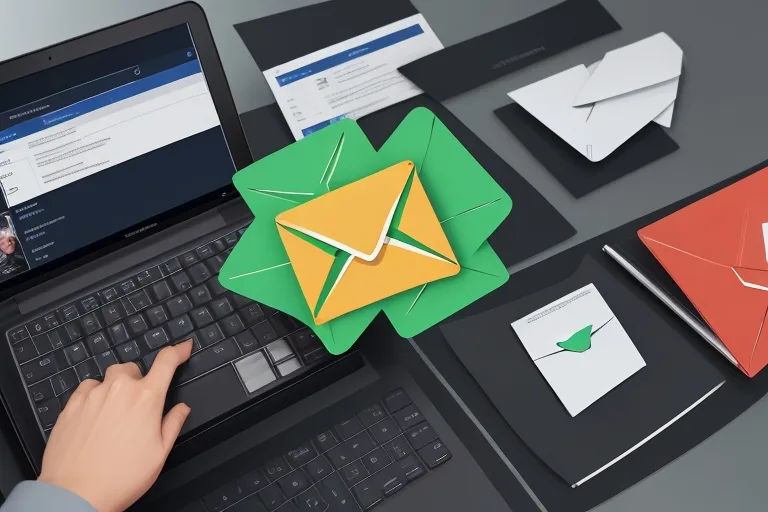A startup email marketing is different from a traditional marketing strategy. When people talk about email marketing, they say to write a catchy subject, build an email list, spam filtration, set goals, personalization, and many other jargons. Those who have tried email marketing know that these strategies are not enough. As per the studies of The Radicati Group, over half of the world population uses email in 2018, and is expected to grow to over 4.2 billion by the end of 2022.
Email marketing for startups is typically in its early stages, which means that startups must build it from the ground up. Outbound and inbound email marketing are brought together in startup email marketing, but the fundamentals remain the same.
Pillars of an Effective Startup Email Marketing Strategy
Email marketing strategy is all about creating a cycle that brings in more and more people. It is a process that involves building trust, providing the correct information, and helping our audience solve their problems.
In a nutshell, business and customers must have a win-win situation where our customers find our product helpful, and the startup can increase the revenue. There are five pillars of an effective email marketing strategy that helps startups in building the right email marketing strategy.
- Reach out to more people
- Ask for permission and avoid spamming
- Find the interest of your customer
- Target Emailing
- Keep Improving
Let’s explore them one by one.
Reach out to more people
As an entrepreneur, I know it is crucial to reach out to more and more people every day. Because if you won’t, your competitor will reach out to those people. The same goes with your startup email marketing as well.
You need to keep building your email list and reach out to more and more people. Here I would suggest you use outbound email marketing techniques. In simple words, you approach people rather than wait for them to come to you.
For example, if you have 1000 people on your email list and it’s not growing, it will exhaust one day. What are you going to do after that? So, keep reaching out to more people and build your email list. It will keep your business and email marketing alive in the market.
There are different methods for outbound email marketing like cold email writing, buying or renting email ids, webinars, paid advertisements, etc. Some might not be directly related to email marketing, but they will eventually become part of the email list.

Ask for permission and avoid spamming
I know you must be thinking that we just talked about writing cold emails, and buying or renting email lists, aren’t these spamming? So, let me make it clear for you. Spamming is when we keep sending emails without the permission of the receiver. And, I am definitely not suggesting startups keep sending emails to your email list. Getting permission from the audience is a must in any startup email marketing strategy to avoid being a spam.
A more professional way is to write a cold email to users and ask them for permission. It is like cold calling, dialing 100 people, and maybe ten people show interest in the conversation.
Hire email copywriters to draft emails and send them to the email list. Some people will show interest in receiving emails in the future. The point is that startups are reaching out to more people while not spamming them.
Furthermore, only seriously interested people will receive relevant emails in the future, allowing startups to focus on the right audience. We brought attention to the large group by sending cold emails and discovered our potential customers by their email consent.

Find the interest of your customer
I shall start with an example to explain this step. Suppose you own an offline clothing store with different varieties of apparel. Now, you cannot expect every person will be interested in buying jeans. People will be looking for tops, sweaters, scarves, and other categories. Some might even be just window shopping or looking to buy in the future.
The point is that each person will have different interests, and you must cater to them accordingly. In simple words, find the interest of your users and categorize them. If you do not provide the content users are looking for, they will unsubscribe. Here we enter into inbound marketing.
To find out the interest of the users, you can use surveys. But, the problem is that you cannot build your whole strategy based on the surveys. So, you must track the user activity on your website, their downloads, and the content they are consuming. These insights will assist you in determining the user’s interests.

Target Emailing
Until now, we focused on sending mass emails to interested people. Now, we will move towards targeted email marketing based on user interest. For example, people interested in buying jeans will receive emails related to only jeans. It is a crucial step in startup email marketing strategy for any startup. If you do not provide targeted & personalized content to your users, they will not engage with you.
When we talk about being more human in our email marketing, we emphasize conversation building. That is how people will connect with you, and you can build trust. Always remember that target emailing is all about the customer and not you. Here, we slowly nurture the leads and convert them into our customers. It is a very vast topic, and every business needs to customize its target email strategy.
Keep Improving
I am going to try to be as practical as possible here. We are all aware that humans are prone to make mistakes, which is perfectly normal. The key is to recognize and correct our errors. Your startup email marketing strategy should follow the same philosophy. If you are not getting your desired results, you must find out the root of the problem.
Of course, magic does not work in real life, so we must pay attention to the data. We must track no. of subscribers, unsubscribes, and visits. We should also monitor how many people open and respond to our emails.

These helpful insights will tell you how your potential customers interact with you. Once you have this information, you can modify your strategy and improve it.
Implementation of the strategy
We have looked at the five pillars of a great startup email strategy. We now know what our master plan must be able to do in the long run. Now is the time to implement our pillars in the real world. So, let’s talk about the implementation of our startup strategy.
Clarity of goals
Defining our goals is the prime step toward an effective strategy. We must decide our destination before starting our journey.
For example, your goal is to make people sign up on your website. You can run a campaign that provides some valuable content or service when someone signs up on your website.
You start building your strategy where you reach out to more people, give them appealing content, make them join after building trust, and keep improving it. You must further break down the goal into small milestones and start working on them.

Understand the Journey of the User
We know that every person is at a different stage on the buyer’s journey. We need to make sure that we understand the process through which our users will go through. That is how we create the funnel of our email strategy. To be more specific, it is about the interest of the user and target email. When we completely understand the journey, we can better serve our users. We can provide relevant information. It will eventually lead towards relationship building and then conversion. In short, you must understand your buyer journey or persona, which will help you build the optimized funnel for your audience.
Automation Software
It is crucial to have automation software to make all these easy. From reaching out to more people and tracking their activity, it becomes very hard as you grow. Having automation software from the beginning will help you implement all the five pillars of an effective startup marketing strategy. You can add people to your email list, track their activities, understand their behavior, find their interests, and help them with relevant content. Doing all of these by ourselves will consume time, and not to forget, we might make mistakes. Automation software implementation eliminates all these risks, and we can run a smooth email campaign.
In conclusion, a startup email marketing strategy requires a few extra things than traditional strategies. It must reach out to more people in a more human manner. It’s achievable by various outbound strategies such as paid advertisement, mass email, et cetera. The key is to identify the interest and provide relatable content in every email to the user. In the end, measure your results with your goal and improve them using the data. I hope this article has opened a new door for your email marketing strategy for your startup. Please share this article with your email marketing team and match it with your current email marketing strategy.

